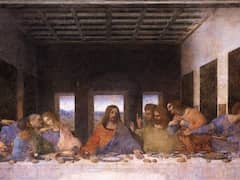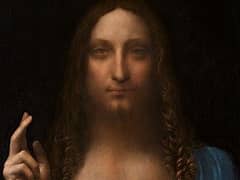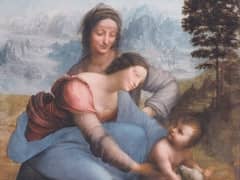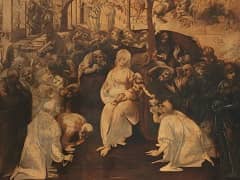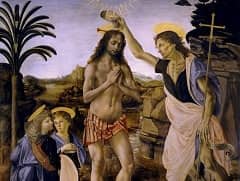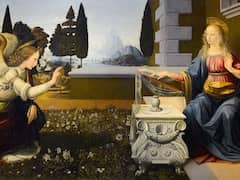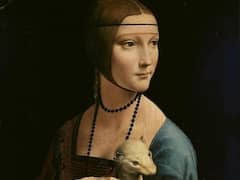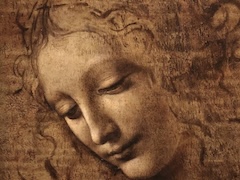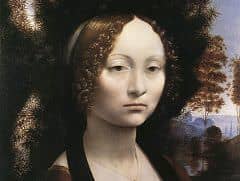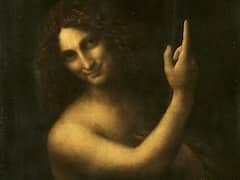The Battle of Anghiari, by Leonardo Da Vinci
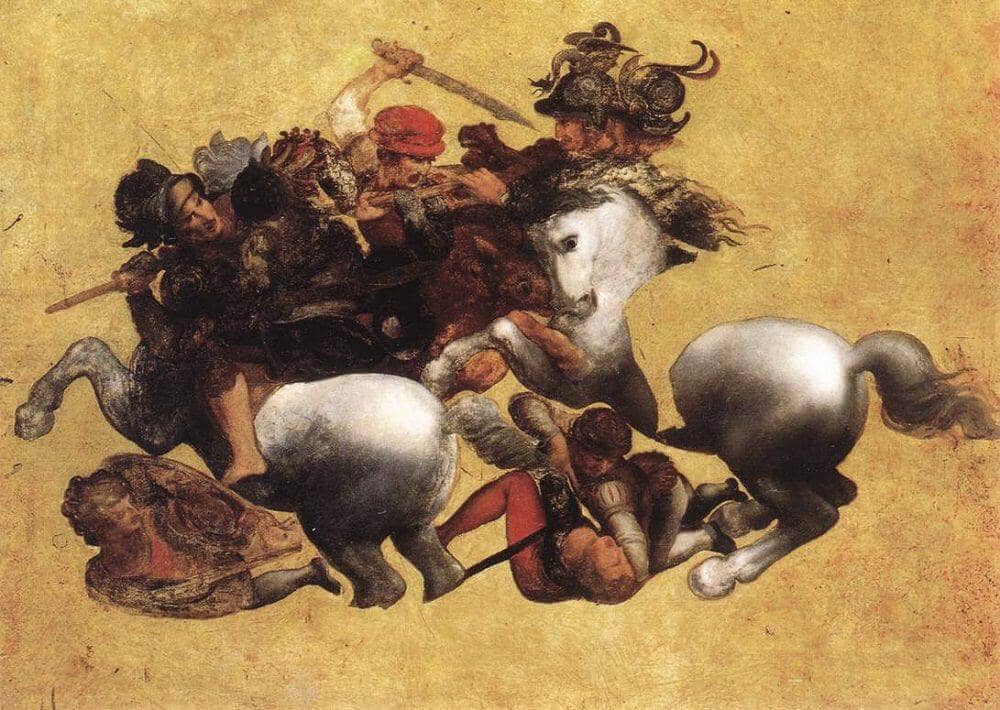
The Battle of Anghiari is a lost painting by Leonardo da Vinci at times referred to as, "The Lost Leonardo", which some commentators believe to be still hidden beneath later frescoes in the Hall of Five Hundred (Salone dei Cinquecento) in the Palazzo Vecchio, Florence. Its central scene depicted three men riding raging war horses engaged in a battle.
Sometime around October 1503, Leonardo was commissioned to paint the mural of The Battle of Anghiari, for the Sala del Gran Consiglio, the recently rebuilt Great Council Hall of the Palazzo Vecchio in Florence, during the first years of the city's republican government.
An ambitious painting, Leonardo used a type of plaster that he read about in a book by Pliny, with the unfortunate result that the work he had barely begun was irreparably ruined. Problems started as soon as Leonardo placed his brush to the wall at 9 am. The weather turned bad, the sky opened and it rained then on until nightfall. The sudden humidity liquefied the paste holding the cartoon in position; as Leonardo lifted his hand to start work the cartoon slid to the floor and tore.
An encaustic (translation: 'fixing by heat') technique was chosen for the artwork. Leonardo took the precaution of doing a trial run of this technique; it was applied to a board and dried well in a warm environment. Firstly a layer of granular plaster was applied, this being primed to a hard flat finish; over this was added a layer of the resinous pitch which was applied with sponges. The combination should have supplied a suitable base for the application of oils. During the painting process an ingenious scaffolding was used to raise Leonardo to the needed height for finishing the upper portion of the centre section of this work, but though the scaffolding was a brilliant design, the painting methods chosen were absolutely disastrous.
Due to his use of experimental techniques, Leonardo's completed center section had vanished almost entirely within only fourteen years. Giorgio Vasari then painted a chaotic battle scene over the area. Ultrasonic tests were carried out in 1976; they searched for traces of Leonardo's painting and none were found.

Many, many copies of the Battle of Anghiari have been painted. Each is different, none fully captures the power of original work by Leonardo. The finest known copy of Leonardo's lost Battle of Anghiari fresco was made in the mid-16th century and then extended at the edges in the early 17th century by Peter Paul Rubens, who also completed the sword of the fourth horseman.


